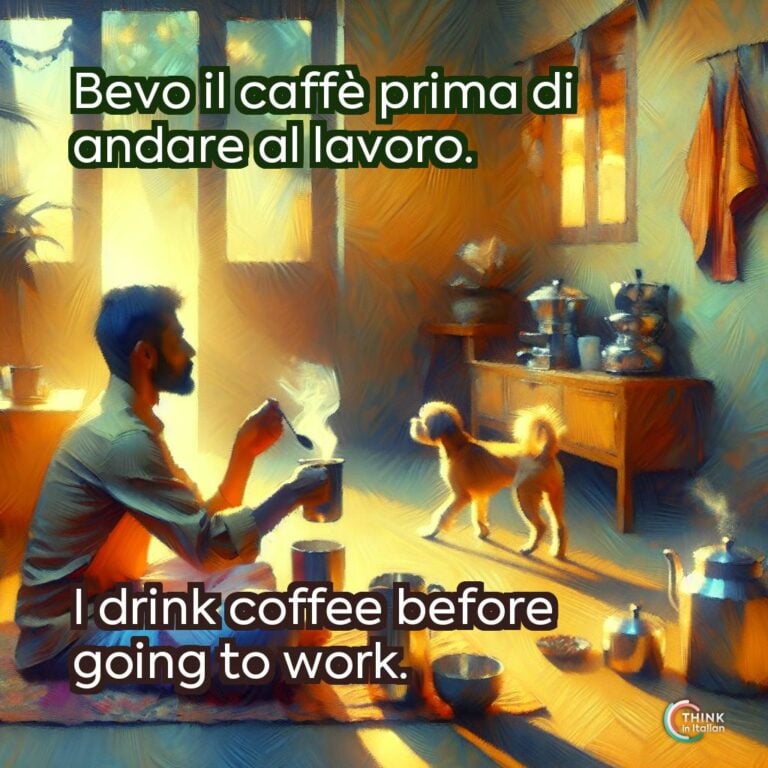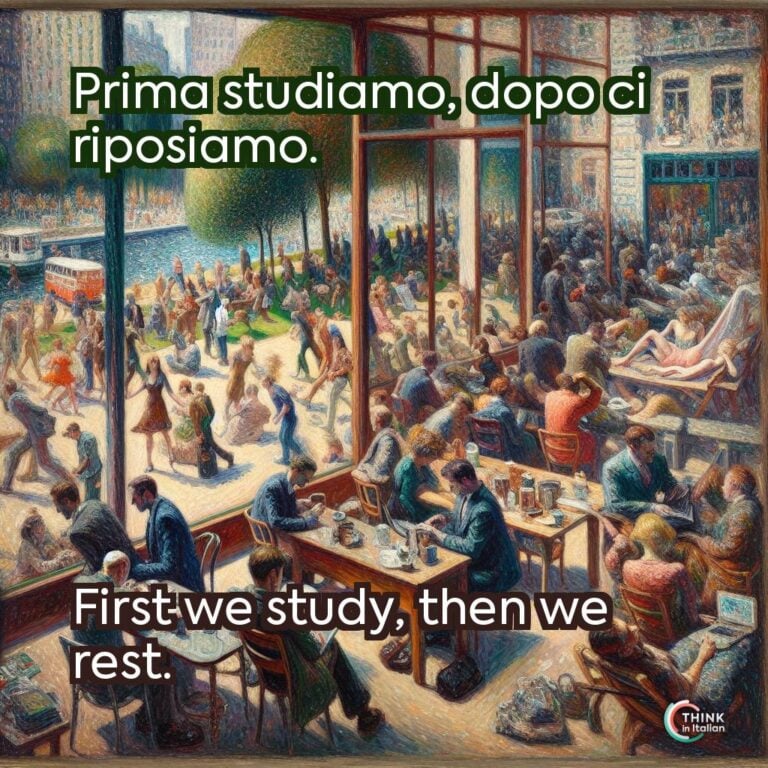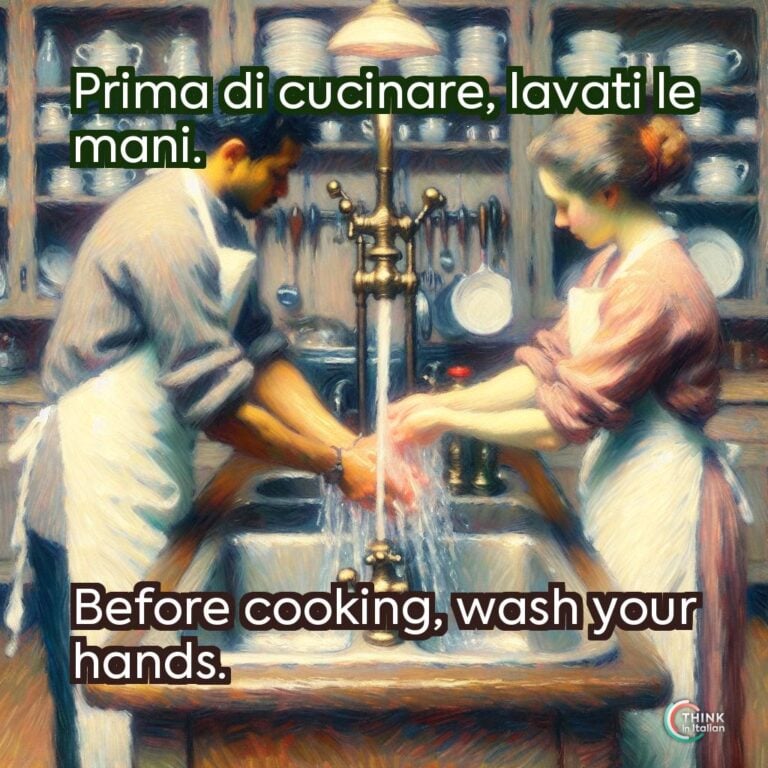Before and After in Italian
One of the first things you need to learn when studying a foreign language is how to talk about events in time. To do so, in English we use the words before and after, which, in Italian, are translated into prima and dopo.
Both prima and dopo are adverbs in Italian, but they also play other grammatical roles depending on the context.
They are relatively simple to understand and translate, but they can become tricky if you do not know which prepositions and verb tenses to use with them.
Also, as you might imagine, they are very commonly used, for discussing sequences of events, making plans, or describing routines in Italian. Therefore, you should really understand how to use them!
“Prima” and “Dopo” in Italian
“Prima” in Italian
In Italian, prima is a versatile word primarily used to indicate temporal sequences. It can be used either alone or in combination with function words, but here I want to show you its original meaning when it is not linked to anything else:
- As an adverb: On its own it means “earlier” or “before.” It can be used to refer to something occurring at an earlier time, often without needing to specify what it is preceding. For example, voglio partire prima (I want to leave earlier).
- As an adjective : It can also be used an adjective with the meaning of “the first”, used in phrases like la prima volta (the first time).
- Other uses: It is also used in expressions such as prima possibile (as soon as possible).
“Dopo” in Italian
Just like prima, dopo is a versatile preposition that primarily indicates temporal succession. It’s used to express the sequence of events or actions in time and can as well be used in combination with other function words. Here I listed some examples of its use alone:
- As a particular preposition: It is most commonly used to discuss events that occur following another event. For example:
Dopo la lezione, vado al parco.
After the lesson, I go to the park.
-
- It behaves as a preposition, but grammatically it is not. In this context, it can also be used directly with a verb in the past infinitive, as in:
Dopo essere andato in banca, ho pranzato.
After having gone to the bank, I had lunch.
- As an adverb: When used as an adverb, it means “afterwards” or “later.” For example:
Ora non posso, ci vediamo dopo.
Now I can’t, see you later.
- Other uses: In comparisons, it can be used metaphorically to mean “next in line” or “secondly” such as in ranking or ordering scenarios. For example:
Dopo Maria, lei è la studentessa più brava.
After Maria, she is the best student.
Combination with Function Words
“Prima che” and “Prima di”
As I mentioned before, prima can be used in combination with other functional words. Specifically, either with the conjunction che or with the preposition di and all its derivates del, dello, della, dei, degli, delle.
Let me now explain them separately:
- Prima che introduces a temporal clause and must be used in combination with the subjunctive mood (congiuntivo).
Voglio partire prima che faccia buio.
I want to leave before it gets dark.
Prima che tu esca, voglio dirti una cosa.
Before you go out, I want to tell you something.
Spero di arrivare prima che inizi a nevicare.
I hope I can get there before it starts snowing.
- Prima di, instead, must be used with an infinitive verb, or it must precede nouns or pronouns. When it is used in these structures, “prima” is grammatically classified as a conjunction because it links two – or more – sentences together.
Remember, if there is a definite article before the noun you must use a preposizione articolata: del, dello, della, etc.
Pettinati prima di uscire
Brush your hair before you go out.
Ci sono io prima di te
There is me before you.
Prima della partita siamo andati a bere una birra.
Before the match, we went for a beer.
“Dopo che” and “Dopo di”
Also dopo in Italian can be linked to “che” or “di”.
- Unike “prima che”, dopo chedoes not require the subjunctive mood, therefore you can simply use the indicative mood of the verb. Of course, depending on what you are saying, you must use a specific verb tense: present, past, or future.
Dopo che finisci metti tutto a posto.
After you finish put everything back in order.
Dopo che sono uscita è arrivato Daniele.
After I left Daniele arrived.
Ti mancherà dopo che sarà andato via.
You will miss him after he leaves.
- Dopo di is uses with personal pronouns only.
Io sono entrata dopo di loro.
I went in after them.
Voi siete arrivati dopo di noi.
You got here after us.
Ho preso il treno dopo di voi.
I took the train after you.




